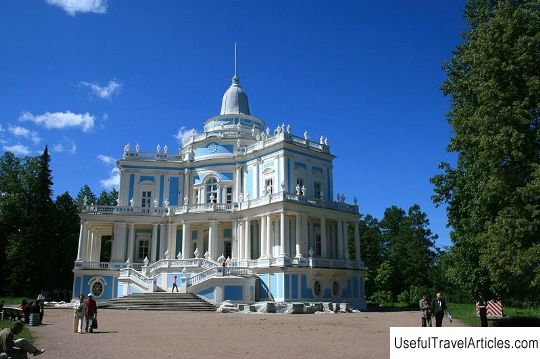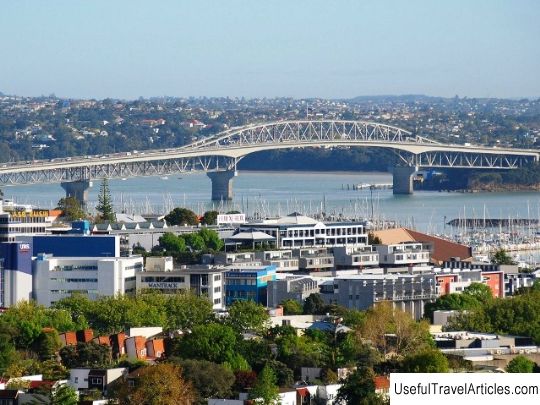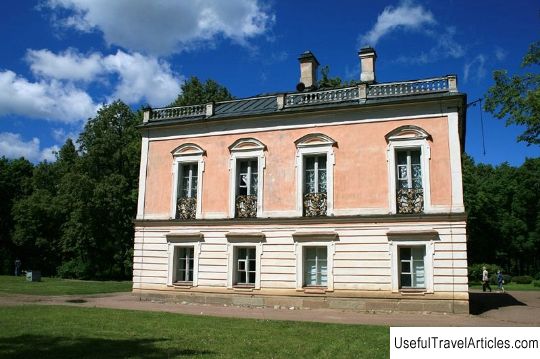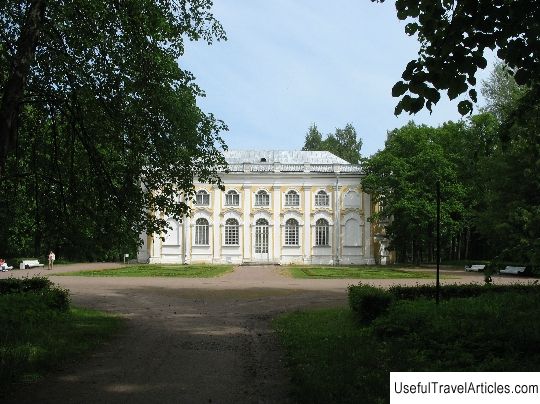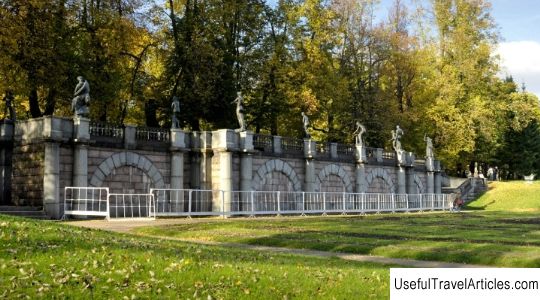Pavilion ”Roller Coaster” description and photos - Russia - St. Petersburg: Lomonosov (Oranienbaum)
Rating: 7,8/10 (3904 votes) 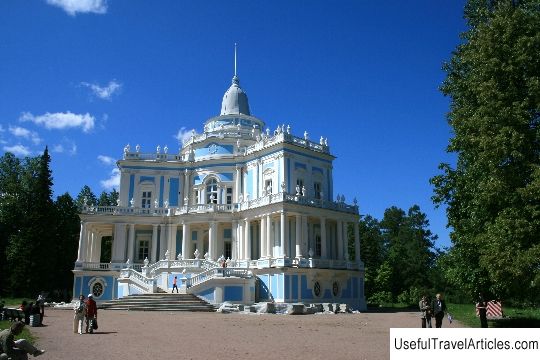
Pavilion "Roller Coaster" description and photos - Russia - St. Petersburg: Lomonosov (Oranienbaum). Detailed information about the attraction. Description, photos and a map showing the nearest significant objects. Photo and descriptionThe Rolling Hill Pavilion in the Oranienbaum palace and park ensemble is an original architectural work by Antonio Rinaldi, which has no analogues either in modern Russian or Western European architecture. A shady alley leads to the pavilion from the western facade of the Chinese Palace. At the end of the alley, a magnificent meadow begins, framed by slender rows of fir trees. At the end of the meadow, on the edge of the coastal terrace, there is a structure, the nobility and beauty of the forms of which immediately rivets the eye. This is the “Roller Coaster” pavilion. It used to be a small part of the skate mountains - a large entertainment facility built in 1762-1774. in the northwest of the park. A rather unusual architectural design, the structure had a length of 532 m and included one straight and three undulating descending slopes. From this mountain they rode exclusively in the summer on special carriages, which moved along the tracks laid on the slopes. On both sides, the slopes were framed by covered galleries decorated with vases and sculptures. They were a picturesque and yet majestic sight. In the middle of the 19th century. the rolling mountains were dismantled. Only a meadow and slender rows of fir trees determine their former location. "Roller Coaster" is the only monument that reminds of the existence of similar entertainment structures that existed here in the 18th century in Russia. The pavilion is a two-storey building on a high plinth, which is cut by large oval windows and is crowned with a light bell-shaped dome, on which once stood the statue of Terpsichore, carved from wood and gilded. The building of the "Roller Coaster" is blue, with white columns, against the background of the gray water of the Gulf of Finland and lush park greenery, it looks especially elegant, being an example of an extraordinary combination of space and architecture. The noble restraint of the classics is given to the building by the severity of architectural forms, clarity of composition and special plasticity of decorative elements. The interiors of the pavilion are distinguished by their elegance and splendor of decoration. Painted in soft and light colors on the walls of the Round Hall, the only floor in the country made of artificial marble, which gently reflects the waves of light pouring through the large window-doors, stucco ornaments of magnificent design, neatly accented with gilding, give the interior a solemn uplifting mood. The Porcelain Cabinet is a true masterpiece of decorative art. Its architectural decoration includes porcelain groups, which were made in 1772-1775. specially for the interior of this pavilion at the Meissen Manufactory, based on the models of the sculptor I.I. The outstanding value of this collection in its high artistic merit and in the fact that it is an allegorical story about the life of Russia in the 18th century, about its naval victories, rapid economic growth, the development of science and art, and an amazing combination of elegance of form and depth of content. p> The architectural design of the White Office and its decorative furnishings reflected the creative quest of the architect Antonio Rinaldi from the grace and sophistication of Rococo to the logic and clarity of classicism. Barozzi and S. Torelli, marble maker G. Spinelli, molder A. Jani, bricklayers I. Andreev and N. Uglovsky. Carpentry works were carried out by K. Ipatov, K. Fedorov, M. Potapov. Only thanks to the efforts, labor and talent of Soviet restorers (sculptors, painters, marblers, gilders, molders), this rare monument of Russian architecture of the 18th century ... in 1959 it opened its doors as a museum.          We also recommend reading Musee national Eugene Delacroix description and photos - France: Paris Topic: Pavilion ”Roller Coaster” description and photos - Russia - St. Petersburg: Lomonosov (Oranienbaum). |
